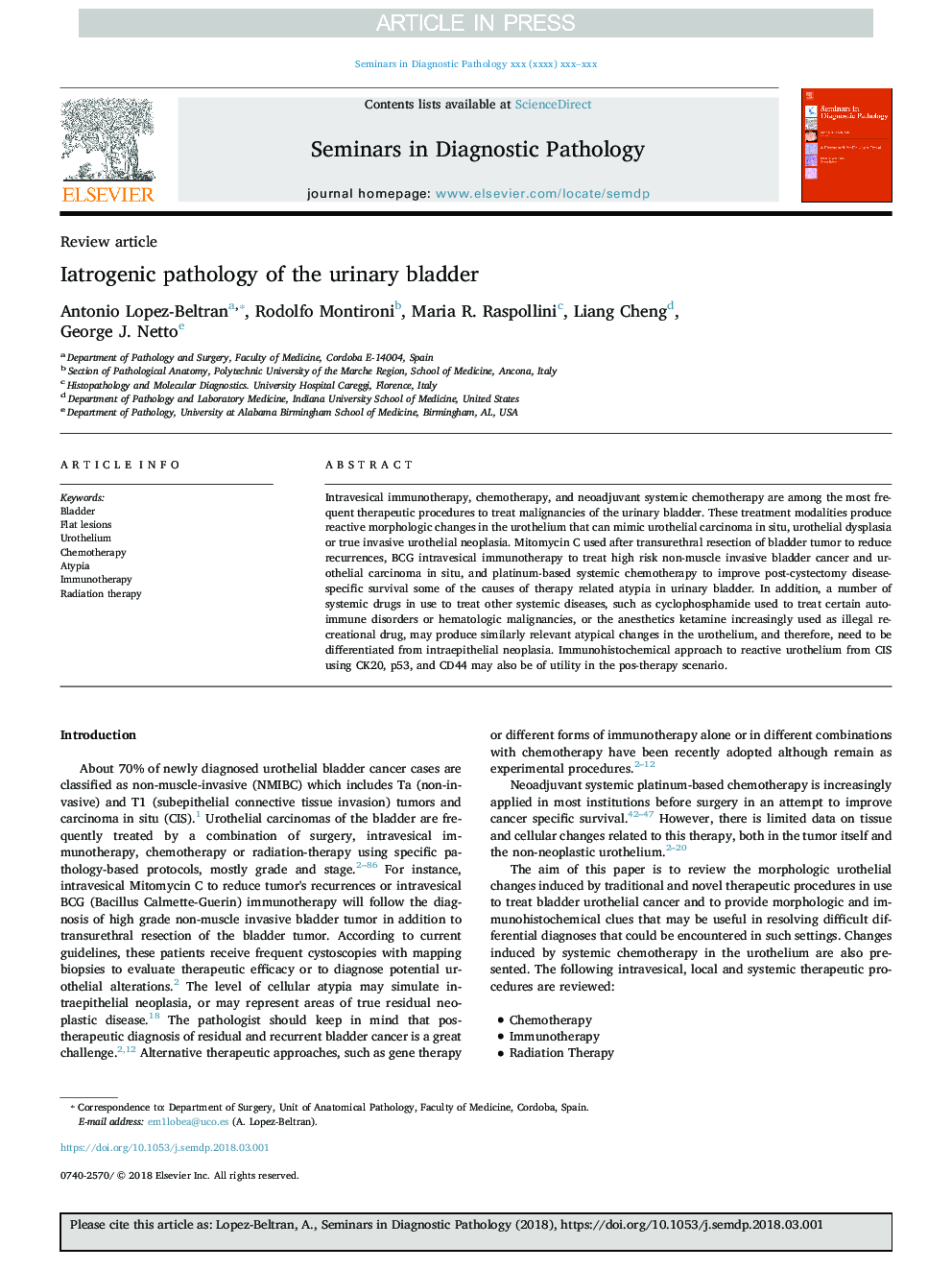| Article ID | Journal | Published Year | Pages | File Type |
|---|---|---|---|---|
| 8808016 | Seminars in Diagnostic Pathology | 2018 | 10 Pages |
Abstract
Intravesical immunotherapy, chemotherapy, and neoadjuvant systemic chemotherapy are among the most frequent therapeutic procedures to treat malignancies of the urinary bladder. These treatment modalities produce reactive morphologic changes in the urothelium that can mimic urothelial carcinoma in situ, urothelial dysplasia or true invasive urothelial neoplasia. Mitomycin C used after transurethral resection of bladder tumor to reduce recurrences, BCG intravesical immunotherapy to treat high risk non-muscle invasive bladder cancer and urothelial carcinoma in situ, and platinum-based systemic chemotherapy to improve post-cystectomy disease-specific survival some of the causes of therapy related atypia in urinary bladder. In addition, a number of systemic drugs in use to treat other systemic diseases, such as cyclophosphamide used to treat certain auto-immune disorders or hematologic malignancies, or the anesthetics ketamine increasingly used as illegal recreational drug, may produce similarly relevant atypical changes in the urothelium, and therefore, need to be differentiated from intraepithelial neoplasia. Immunohistochemical approach to reactive urothelium from CIS using CK20, p53, and CD44 may also be of utility in the pos-therapy scenario.
Related Topics
Health Sciences
Medicine and Dentistry
Pathology and Medical Technology
Authors
Antonio Lopez-Beltran, Rodolfo Montironi, Maria R. Raspollini, Liang Cheng, George J. Netto,
